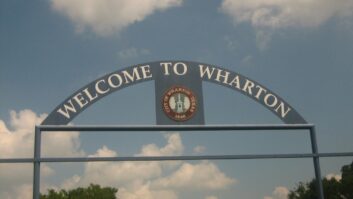WASHINGTON Engineers and attorneys who use the FCC’s Consolidated Database System report marked improvement in the software.
Members of the Association of Federal Communications Consulting Engineers and the Federal Communications Bar Association say they’ve seen progress in solving some of the problems associated with the database and its electronic filing capability.
The groups believe CDBS will continue to improve.
“I believe that the FCC’s staff is carefully considering our comments and suggestions, and implementing changes as their resources allow,” said Joe Davis, a partner at Cavell, Mertz & Davis Inc., who also served as AFCCE president until June 2001.
“Some progress has been made, and we are doing what we can to prompt further needed improvement.”
Since the database was launched in 1999, users have criticized CDBS because of its inaccurate records, causing a headache for the consulting engineers who use the database to generate technical studies (RW, May 23). Other users have reported difficulty in filing mandatory applications using CDBS.
One senior engineer in the commission’s Audio Services Division said the division has been working hard to address users’ concerns in the last few months. An ad-hoc committee from AFCCE has been meeting with division representatives once a month. A similar committee from FCBA has been meeting with the division whenever problems arise as well.
Among the improvements on which the Audio Services Division staff has been working is rewriting software to ensure that attachments to electronically filed applications can be viewed; instituting 15 to 20 data validity checks to guard against inaccurate data from getting into the database; and checking whether current records contain accurate information.
The FCC engineer said the division also refined the way the system works. For example, FCC staffers now confirm that attached sales agreements can be viewed before sending out a public notice.
Through a series of validity checks, the division has searched all AM and FM database records for inaccurate data in a variety of fields including frequency, channel, service codes, station class, status, height, coordinates and subsidiary coordinates.
The staff has also checked different types of information contained in engineering records including tables to make sure each table contains legitimate values. The division is conducting spot checks on a day-to-day basis to check that records are archived properly.
Normally, validation of each application catches missing or mistyped information, the engineer said, but these checks were established to make sure the information makes sense.
Making strides
One engineering consultant, who asked that his name not be used, said the division is making great strides despite a lack of resources.
“The errors are not showing up as often,” he said. But the FCC still needs additional money and manpower, he said, and without such resources, eliminating the errors will take “a long time.”
AFCCE’s Davis is pleased with the progress of the ad-hoc committee.
“I think it has been very helpful for the consultants to hear from FCC staff regarding the continued development of the CDBS and electronic filing,” he said. “In turn, I believe our feedback and comments to the FCC staff have been helpful in their efforts to make the system work better.”
Davis said the committee discussed three issues in particular with the division: electronically filed exhibits/attachments that are missing despite successful uploading,; error checking when data is electronically filed; and the validity of engineering data that is contained in the database. The FCC said it has resolved or is close to solving many of the problems associated with these issues.
Due to the error checking ability of the software, Davis said, there have been some “bugs” that prevented CDBS from accepting an application due to missing data, even the data is not required for a particular station. However, he said, the division staff has been responsive to correcting the problem.
AFCCE President Charles Cooper, a partner with duTreil, Lundin & Rackley Inc., said the meetings would continue until the remaining issues are resolved. After the improvements are complete, he said, CDBS would be a valuable tool for submitting and reviewing FCC files for AFCCE members as well as others.
“As with any large project, there are complications that have to be defined and solved,” Cooper said. “However, AFCCE firmly believes that CDBS eventually will be a ‘can’t live without’ service from the commission’s Mass Media Bureau.”
Lawyers agree
FCBA committee members expressed a similar sentiment about the support they’ve gotten from the division.
“From my vantage point, they’ve been open and tried ways to remedy problems,” said Dennis Corbett, attorney at Levanthal, Senter and Lerman. “The FCC is not running from the problem.”
Corbett said the FCC has been responsive to FCBA’s concern since it started to make electronic applications mandatory last year. When the FCBA questioned the mandatory electronic filing of Forms 301, 314 and 315, the FCC agreed to phase in the electronic capability, he said.
More recently, FCBA members met with the division to discuss the use of federal regulation numbers on applications, which is a common piece of information asked for on mass media and wireless forms. Corbett said there has been some confusion over what is required on the different forms and the system is not uniform for each FCC database.
That is one thing that might be solved in the future when the FCC contracts one contractor to do all of the work on its database ¾ a plan already in place for the next fiscal year, said an FCC source. In order to limit any problems to the various databases that might result from the plan, he said, the commission is taking steps to ensure a smooth transition.










